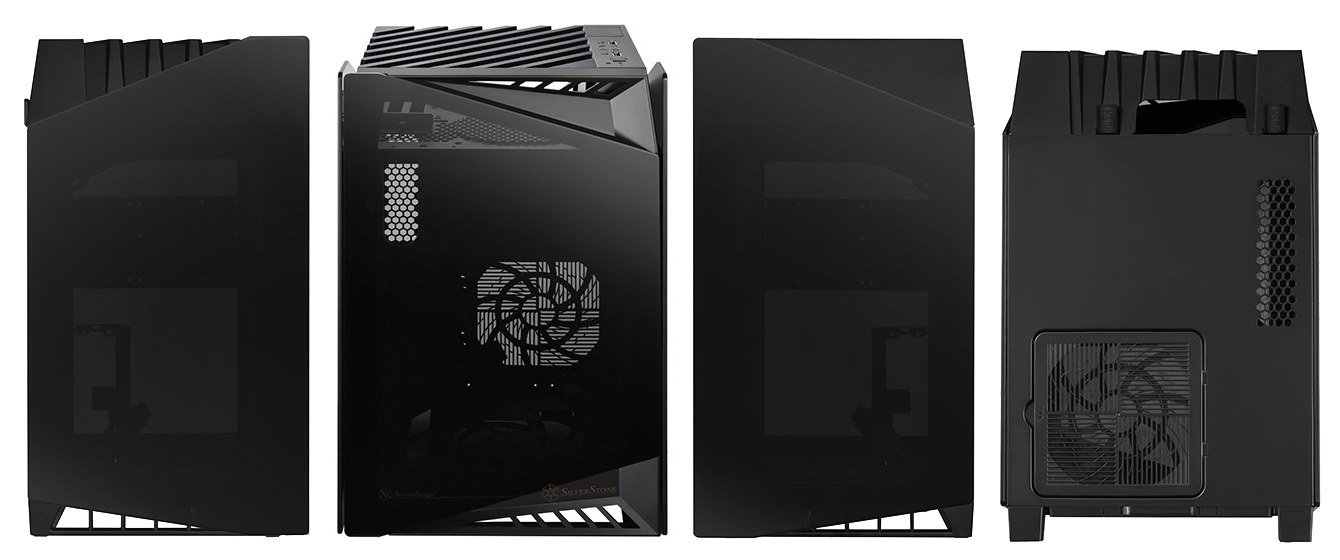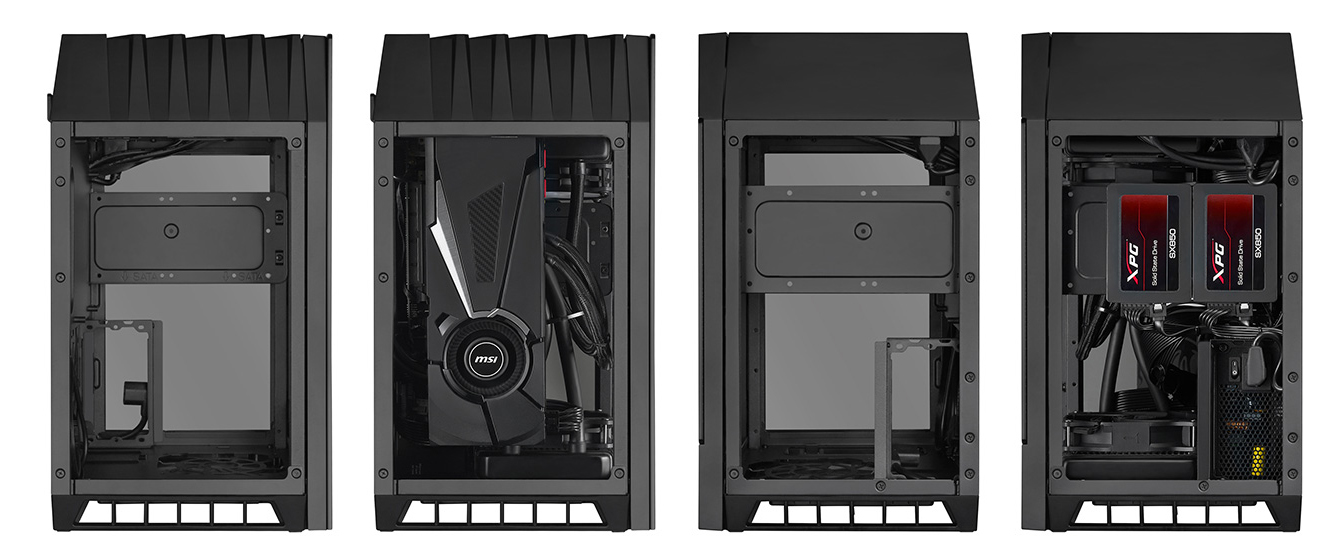SilverStone (Finally) Launches Lucid LD03 Mini-ITX Case
Initially teased at Computex 2018, SilverStone Technology is releasing its Lucid Series LD03…just in time for Computex 2019. An homage to its earlier FT03, the downward-facing Mini-ITX design and updraft cooling remain.
Features include support for double-slot graphics cards up to 309mm in length, 190mm clearance for CPU air coolers and/or a bottom-mounted 120mm radiator, a side-mounted drive tray capable of holding dual 2.5” or a combination of 3.5” and 2.5” drives, vertical motherboard orientation, a bottom-mounted SFX power supply bay with extension cable, and glass panels with tool-free attachment on three sides. Front panel ports include two USB 3.0 plus headphone and mic.
SilverStone notes that the side panels are tinted darkly enough that unlighted components will remain hidden, giving the finished build a more classic aesthetic. Showoffs are free to choose lighted components instead.
Even though the case has been officially released, we haven’t seen any details regarding pricing or availability. We suggest that interested parties keep an eye out at their favorite sellers.
Get Tom's Hardware's best news and in-depth reviews, straight to your inbox.
-
g-unit1111 Meh. If I'm going for a small form factor build I'm choosing either the Corsair 280X or the NZXT H200i over this.Reply -
mlee 2500 This is pretty cool, I look forward to hearing how it performs.Reply
Silverstone has allot of previous experience with vertical mount/cooling case designs. I have used their excellent Fortress FT03 model for several years to good effect.
Personally though, I ultimately decided that I could afford the extra 10 inches or so of floor space that a full sized chassis takes up, and won't be exploring SFF again until I have a compelling need (smaller office or the need to occasionally transport it).
It's just easier to build a cooler and quieter, no-compromise machine inside a mid-to-full sized case (I know those are fighting words for SFF aficionados, but my decades building both footprints overwhelmingly lead me to such a conclusion). -
g-unit1111 Replymlee 2500 said:It's just easier to build a cooler and quieter, no-compromise machine inside a mid-to-full sized case (I know those are fighting words for SFF aficionados, but my decades building both footprints overwhelmingly lead me to such a conclusion).
I agree. I've built micro, mini, and full size systems. I always find mid towers the easiest to work in, especially if they have HD cages removed like my current cases. I think mini ITX are generally the biggest pains to work in especially when you're dealing with cable management due to the confined spaces. -
mlee 2500 Yeah, I mean, if I had a use case where I really needed a small PC.....then I think it's simply great that they can be built.Reply
But after having shuttle sized SFF PC's just sit next to my desk for years, and suffering all the compromises they entail (will the latest GPU fit? Will the SFF power supply be sufficient?) I finally asked myself "for what?". What practical difference does having a shoebox instead of a mid-sized tower serve me?
g-unit1111 said:I agree. I've built micro, mini, and full size systems. I always find mid towers the easiest to work in, especially if they have HD cages removed like my current cases. I think mini ITX are generally the biggest pains to work in especially when you're dealing with cable management due to the confined spaces. -
g-unit1111 Replymlee 2500 said:Yeah, I mean, if I had a use case where I really needed a small PC.....then I think it's simply great that they can be built.
But after having shuttle sized SFF PC's just sit next to my desk for years, and suffering all the compromises they entail (will the latest GPU fit? Will the SFF power supply be sufficient?) I finally asked myself "for what?". What practical difference does having a shoebox instead of a mid-sized tower serve me?
Oh yeah for building I always prefer mid tower CPUs. I don't transport my PCs much so I generally tend to prefer larger tower cases that are easier to build in. But I do understand that not every size form factor works for every situation. I'll use my ATX cases until they're no longer viable, but my next build I definitely want to experiment with a smaller form factor.



